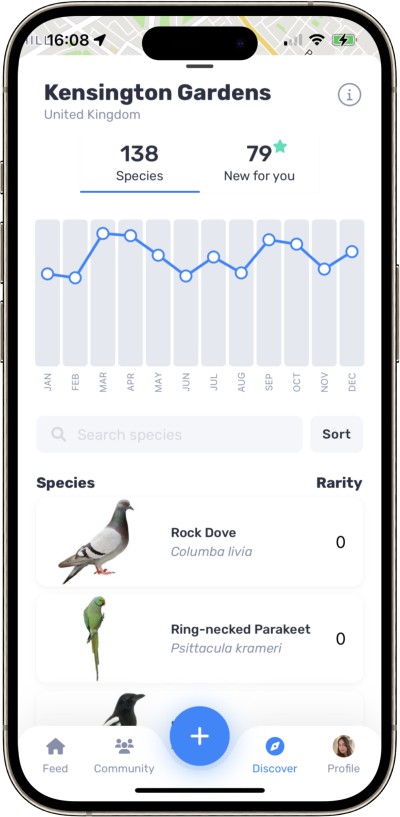loading...
Oropendolas, Orioles, Blackbirds
The Icteridae family, commonly known as New World blackbirds, encompasses a variety of small to medium-sized colorful passerine birds, including blackbirds, orioles, bobolinks, meadowlarks, grackles, cowbirds, oropendolas, and caciques. These birds exhibit a predominant black plumage with touches of yellow, orange, or red and are named from the Greek word for 'jaundiced ones' due to their yellow feathers. They can be found across the New World, with the highest densities in Colombia and southern Mexico, and their habitats range from scrublands and swamps to forests and savannas. Their sizes and behaviors are diverse, with significant sexual dimorphism in many species, and they showcase unique adaptations such as the ability to forcefully open their bills to access food. Icterids have varied diets from fruit and nectar to seeds and insects, with some species having become agricultural pests. Their nesting habits are equally diverse, from woven nests to colonial nesting, with some species like cowbirds practicing brood parasitism. Although some icterids are thriving, others are threatened due to habitat loss and other factors. Despite the family's name, they are distinct from Old World blackbirds and orioles, and are not to be confused with the recently established family Icteriidae, consisting solely of the yellow-breasted chat. Additionally, some species have cultural significance in Native American folklore, and the family has a rich taxonomy with numerous genera and species.
Regions
Categories
All
African & New World Parrots
Albatrosses
Anhingas, Darters
Auks
Austral Storm Petrels
Barn Owls
Bee-eaters
Caracaras, Falcons
Cardinals & Allies
Chachalacas, Curassows, Guans
Chats, Old World Flycatchers
Chat-tanagers
Cockatoos
Cormorants, Shags
Coursers, Pratincoles
Cranes
Crows, Jays
Cuban Warblers
Cuckoos
Ducks, Geese, Swans
Finches, Euphonias
Flamingos
Frigatebirds
Gannets, Boobies
Gnatcatchers
Goldcrests, Kinglets
Grebes
Guineafowl
Gulls, Terns, Skimmers
Herons, Bitterns
Hispaniolan Tanagers
Hummingbirds
Ibises, Spoonbills
Indigobirds, Whydahs
Jacanas
Kingfishers
Kites, Hawks, Eagles
Larks
Leaf Warblers & Allies
Limpkin
Longspurs, Snow Buntings
Loons
Mockingbirds, Thrashers
New World Quail
New World Sparrows
New World Vultures
New World Warblers
Nightjars
Northern Storm Petrels
Nuthatches
Old World Parrots
Old World Sparrows, Snowfinches
Oropendolas, Orioles, Blackbirds
Ospreys
Owls
Oystercatchers
Palmchat
Pelicans
Petrels, Shearwaters, Diving Petrels
Pheasants & Allies
Pigeons, Doves
Plovers
Potoos
Puerto Rican Tanager
Rails, Crakes & Coots
Sandpipers, Snipes
Shrikes
Skuas
Spindalises
Starlings, Rhabdornis
Stilts, Avocets
Stone-curlews, Thick-knees
Storks
Swallows, Martins
Swifts
Tanagers & Allies
Thrushes
Tityras, Becards, Sharpbill
Todies
Toucans
Treecreepers
Trogons
Tropicbirds
Tyrant Flycatchers, Calyptura
Vireos, Greenlets, Shrike-babblers
Wagtails, Pipits
Waxbills, Munias & Allies
Waxwings
Weavers, Widowbirds
Woodpeckers
Wrens
Yellow-breasted Chat
Bahama Oriole
Icterus northropi

Baltimore Oriole
Icterus galbula

Boat-tailed Grackle
Quiscalus major

Bobolink
Dolichonyx oryzivorus

Brown-headed Cowbird
Molothrus ater

Bullock's Oriole
Icterus bullockii

Carib Grackle
Quiscalus lugubris

Common Grackle
Quiscalus quiscula
Cuban Blackbird
Ptiloxena atroviolacea
Cuban Oriole
Icterus melanopsis

Eastern Meadowlark
Sturnella magna

Giant Cowbird
Molothrus oryzivorus
Greater Antillean Grackle
Quiscalus niger

Great-tailed Grackle
Quiscalus mexicanus
Hispaniolan Oriole
Icterus dominicensis

Hooded Oriole
Icterus cucullatus
Jamaican Blackbird
Nesopsar nigerrimus
Jamaican Oriole
Icterus leucopteryx
Martinique Oriole
Icterus bonana
Montserrat Oriole
Icterus oberi

Orchard Oriole
Icterus spurius
Puerto Rican Oriole
Icterus portoricensis
Red-shouldered Blackbird
Agelaius assimilis

Red-winged Blackbird
Agelaius phoeniceus

Rusty Blackbird
Euphagus carolinus

Shiny Cowbird
Molothrus bonariensis
St. Lucia Oriole
Icterus laudabilis
Tawny-shouldered Blackbird
Agelaius humeralis

Venezuelan Troupial
Icterus icterus

Yellow-headed Blackbird
Xanthocephalus xanthocephalus

Yellow-hooded Blackbird
Chrysomus icterocephalus

Yellow Oriole
Icterus nigrogularis
Yellow-shouldered Blackbird
Agelaius xanthomus
Your birdwatching journey like never before
Connect with nature in minutes
Take a walk, look out of the window and log the birds that you see. Feel good about those little connections to nature.
Discover the joy of birding
Find new birding spots, see more birds, share and celebrate with a like-minded community of nature lovers.
Play your part in saving nature
Logging your birding sightings and sessions turns into positive action for our planet. Every sighting counts.
Species Categories
African & New World ParrotsAlbatrossesAnhingas, DartersAuksAustral Storm PetrelsBarn OwlsBee-eatersCaracaras, FalconsCardinals & AlliesChachalacas, Curassows, GuansChats, Old World FlycatchersChat-tanagersCockatoosCormorants, ShagsCoursers, PratincolesCranesCrows, JaysCuban WarblersCuckoosDucks, Geese, SwansFinches, EuphoniasFlamingosFrigatebirdsGannets, BoobiesGnatcatchersGoldcrests, KingletsGrebesGuineafowlGulls, Terns, SkimmersHerons, BitternsHispaniolan TanagersHummingbirdsIbises, SpoonbillsIndigobirds, WhydahsJacanasKingfishersKites, Hawks, EaglesLarksLeaf Warblers & AlliesLimpkinLongspurs, Snow BuntingsLoonsMockingbirds, ThrashersNew World QuailNew World SparrowsNew World VulturesNew World WarblersNightjarsNorthern Storm PetrelsNuthatchesOld World ParrotsOld World Sparrows, SnowfinchesOropendolas, Orioles, BlackbirdsOspreysOwlsOystercatchersPalmchatPelicansPetrels, Shearwaters, Diving PetrelsPheasants & AlliesPigeons, DovesPloversPotoosPuerto Rican TanagerRails, Crakes & CootsSandpipers, SnipesShrikesSkuasSpindalisesStarlings, RhabdornisStilts, AvocetsStone-curlews, Thick-kneesStorksSwallows, MartinsSwiftsTanagers & AlliesThrushesTityras, Becards, SharpbillTodiesToucansTreecreepersTrogonsTropicbirdsTyrant Flycatchers, CalypturaVireos, Greenlets, Shrike-babblersWagtails, PipitsWaxbills, Munias & AlliesWaxwingsWeavers, WidowbirdsWoodpeckersWrensYellow-breasted Chat
Birda Blog
What Our Birders Say
Explore
Work with Birda
Work with Birda
Copyright © 2024 Chirp Birding. All rights reserved.



























